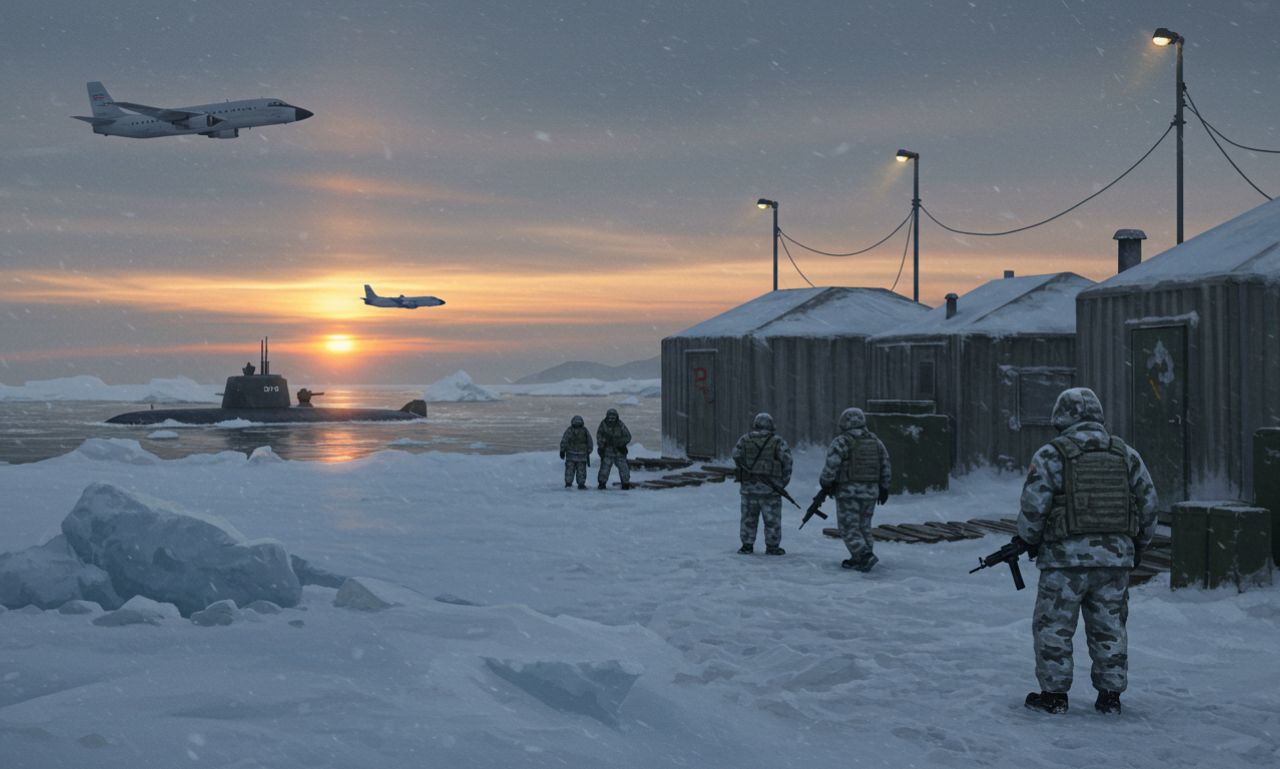
The term Arctic Cold War refers to the rising tensions among nations competing for influence, military presence, and resources in the Arctic region. Once considered a frozen wilderness with little geopolitical weight, the Arctic has become a strategic hotspot in global politics. Melting ice due to climate change has unlocked new shipping lanes, vast untapped energy reserves, and expanded military opportunities—sparking a race for dominance.
This modern rivalry mirrors elements of the original Cold War, with global powers positioning themselves to secure influence in the North. The Arctic Cold War is shaping energy policies, security strategies, and environmental debates worldwide.
The Strategic Importance of the Arctic Cold War
The Arctic is no longer just about ice and polar bears—it is about geopolitical leverage. The region holds about 13% of the world’s undiscovered oil and 30% of its undiscovered gas, according to the US Geological Survey. Additionally, new shipping routes like the Northern Sea Route cut travel time between Asia and Europe significantly, making Arctic waters a future economic highway.
In the Arctic Cold War, geography itself has become a power tool. Nations that control Arctic routes and resources will hold tremendous sway over future trade and energy supplies.
Historical Context of Arctic Cold War
During the original Cold War, the Arctic was a militarized zone. The Soviet Union and the United States monitored each other through the Arctic Circle, with nuclear submarines prowling beneath the ice. Radar systems like the Distant Early Warning Line (DEW Line) were established to detect incoming bombers.
Today, the Arctic Cold War revives this strategic mindset, but with broader players and higher stakes—blending military rivalry, climate change, and economic ambition.
Nations Involved in the Arctic Cold War
-
Russia: Holds the largest Arctic coastline, heavily militarizing the region.
-
United States: Protecting Alaska and countering Russian and Chinese influence.
-
Canada: Defending sovereignty claims in the Northwest Passage.
-
Norway & Denmark (Greenland): Increasing NATO presence.
-
China: Declaring itself a “near-Arctic state” with ambitions in shipping and energy.
Russia’s Role in the Arctic Cold War
Russia is the most aggressive Arctic actor. With nearly half of the Arctic coastline under its control, Moscow has established military bases, airfields, and deployed advanced icebreakers. The Kremlin also claims sovereignty over vast seabeds, eyeing oil and gas deposits.
For Russia, the Arctic Cold War is about securing economic lifelines and enhancing global military presence.
United States and the Arctic Cold War
The United States has lagged behind in Arctic infrastructure compared to Russia. However, recent years have seen renewed interest in modernizing icebreaker fleets, strengthening Alaskan defenses, and partnering with NATO allies to counter Moscow’s dominance.
The Arctic Cold War also forces Washington to balance economic opportunity with environmental commitments.
China’s Growing Arctic Ambitions
Although geographically distant, China plays a bold role in the Arctic Cold War. Beijing’s Polar Silk Road initiative integrates Arctic shipping into its Belt and Road Initiative. It invests in Greenland’s mining and Russian Arctic energy projects, aiming to secure long-term strategic and economic influence.
This has alarmed both the US and Europe, as China seeks permanent footing in a region traditionally dominated by Arctic nations.
Climate Change and the Arctic Cold War
Ironically, climate change—often seen as a crisis—is fueling opportunities in the Arctic Cold War. Melting icecaps make the region more navigable and resource-rich.
However, environmental risks are severe:
-
Oil spills would devastate fragile ecosystems.
-
Military buildup threatens indigenous communities.
-
Exploiting resources worsens global warming.
The Arctic Cold Wars thus raises a moral question: Should economic gain outweigh environmental protection?
Shipping Routes and Arctic Cold War Competition
Newly accessible routes like the Northwest Passage (through Canada) and the Northern Sea Route (along Russia) could reshape global trade. Shorter paths reduce costs and fuel, but sovereignty disputes remain heated.
The Arctic Cold Wars is partly a struggle over who controls and profits from these maritime highways.
Military Buildup in the Arctic Cold Wars
From submarines to stealth aircraft, the Arctic Cold War has seen rising militarization:
-
Russia operates advanced nuclear-powered icebreakers.
-
NATO conducts military drills in Norway and the Barents Sea.
-
The US expands radar systems and missile defenses in Alaska.
The risk is clear—what starts as strategic posturing could spiral into conflict.
NATO’s Role in the Arctic Cold Wars
NATO has intensified Arctic operations to counterbalance Russia. Joint exercises like Cold Response simulate defense scenarios in extreme polar conditions.
The Arctic Cold Wars has, in many ways, revitalized NATO unity—reminding allies of the importance of collective defense in icy frontiers.
Economic Opportunities in the Arctic Cold Wars
The region is rich in:
-
Oil & Gas
-
Rare Earth Minerals
-
Fisheries
Nations involved in the Arctic Cold Wars see it as a goldmine for the future global economy. However, exploiting these resources comes with risks of environmental degradation and geopolitical confrontation.
Environmental Threats of the Arctic Cold War
The fragile Arctic ecosystem is at risk:
-
Melting permafrost releases methane, accelerating warming.
-
Overfishing threatens biodiversity.
-
Military activities increase pollution.
In the Arctic Cold Wars, the environment is caught in the crossfire between power and profit.
Indigenous Communities and the Arctic Cold Wars
Indigenous peoples like the Inuit and Sámi have lived in the Arctic for centuries. The Arctic Cold War threatens their way of life by disturbing hunting grounds, ecosystems, and cultural traditions.
Ironically, while nations fight for control, local communities are often left out of decision-making.
Technology in the Arctic Cold Wars
Advanced technologies play a vital role:
-
Satellite surveillance to track ships and submarines
-
Ice-resistant drilling rigs for oil extraction
-
Climate modeling to predict environmental shifts
The Arctic Cold Wars is as much about digital superiority as it is about physical presence.
Future Outlook of the Arctic Cold Wars
The future of the Arctic Cold will depend on:
-
International cooperation through forums like the Arctic Council
-
Balancing economic interests with climate policies
-
Avoiding escalation between NATO, Russia, and China
The Arctic could become either a zone of conflict—or a model for peaceful collaboration.
Conclusion
The Arctic Cold Wars is more than a regional issue—it’s a global power struggle unfolding in one of the planet’s most fragile environments. Nations are racing for military dominance, economic wealth, and strategic control, all while climate change accelerates the pace of competition.







